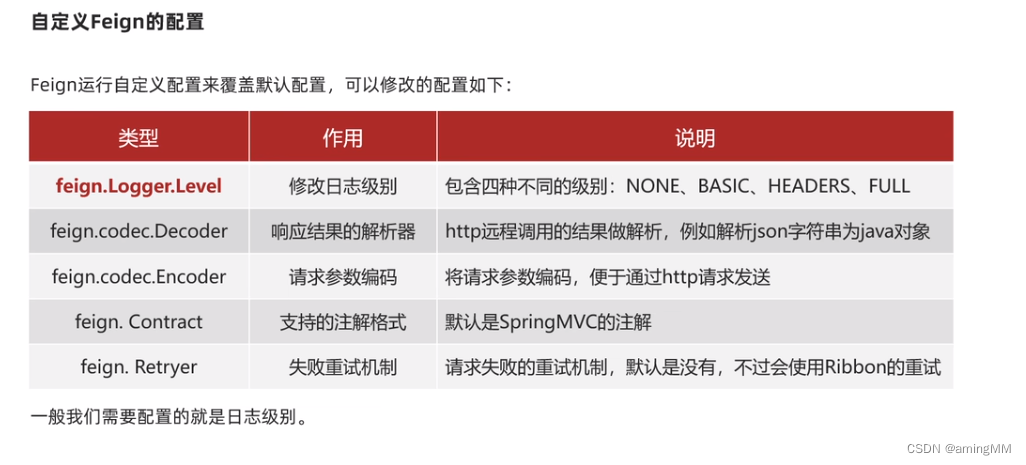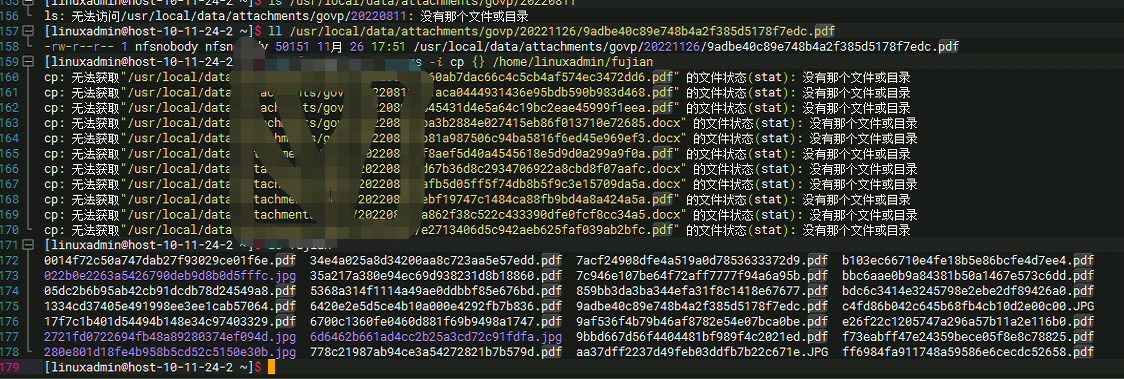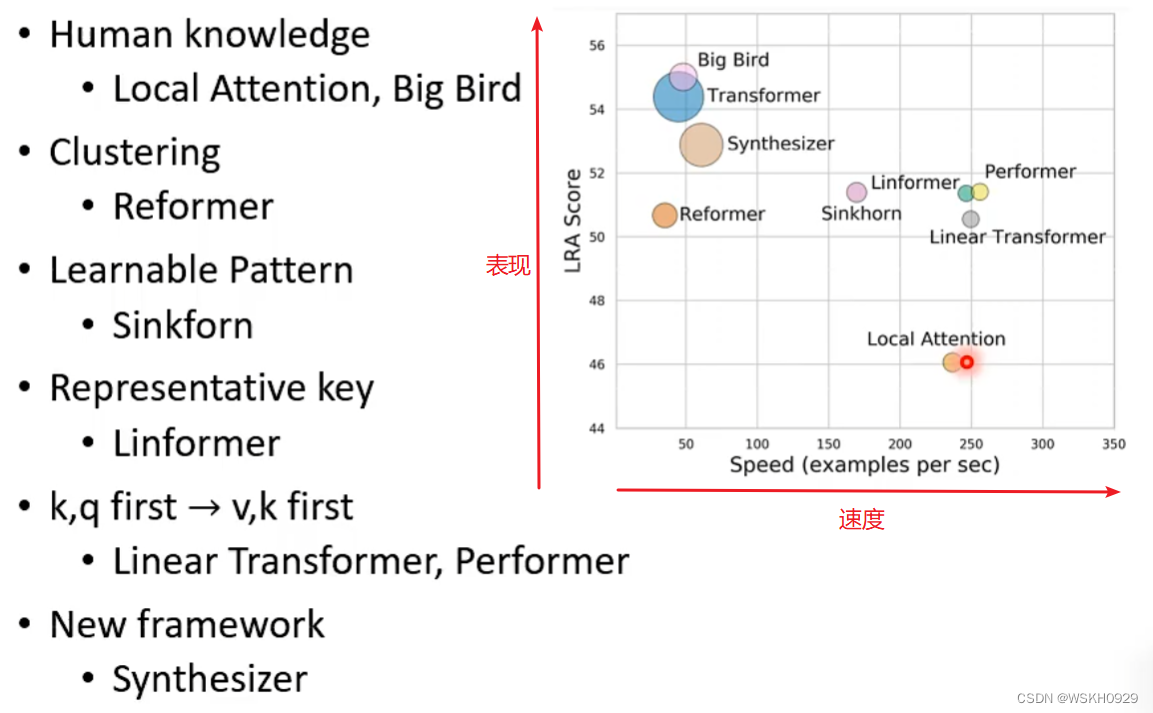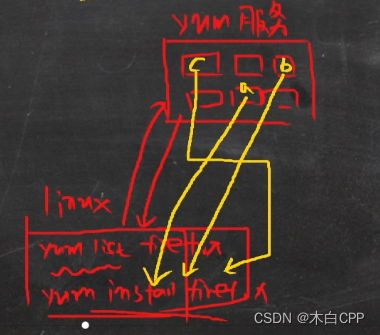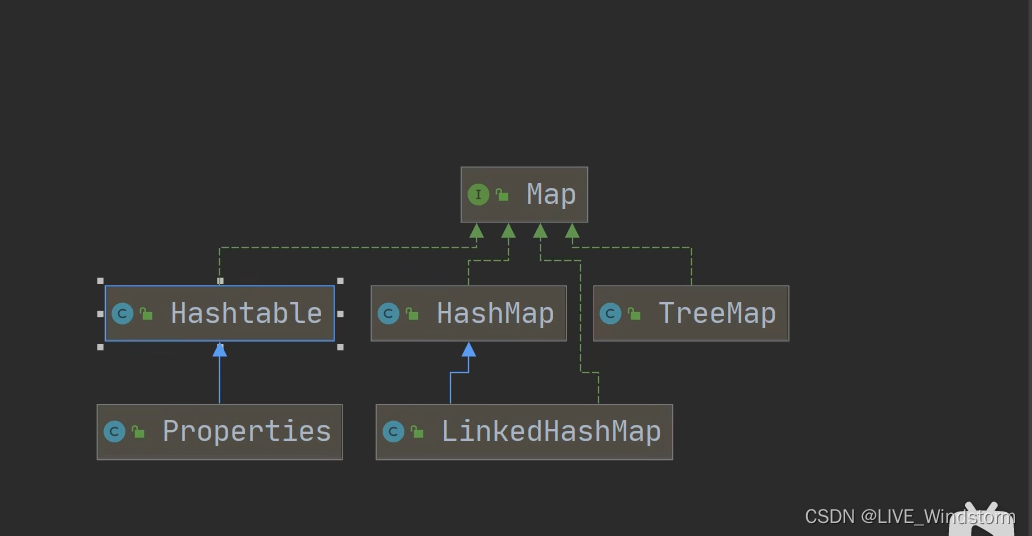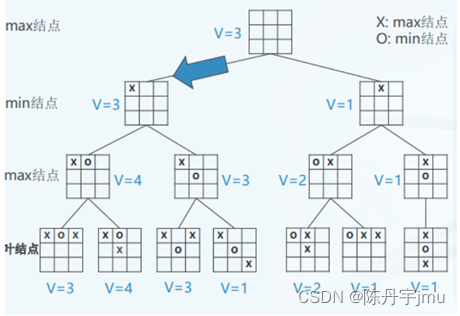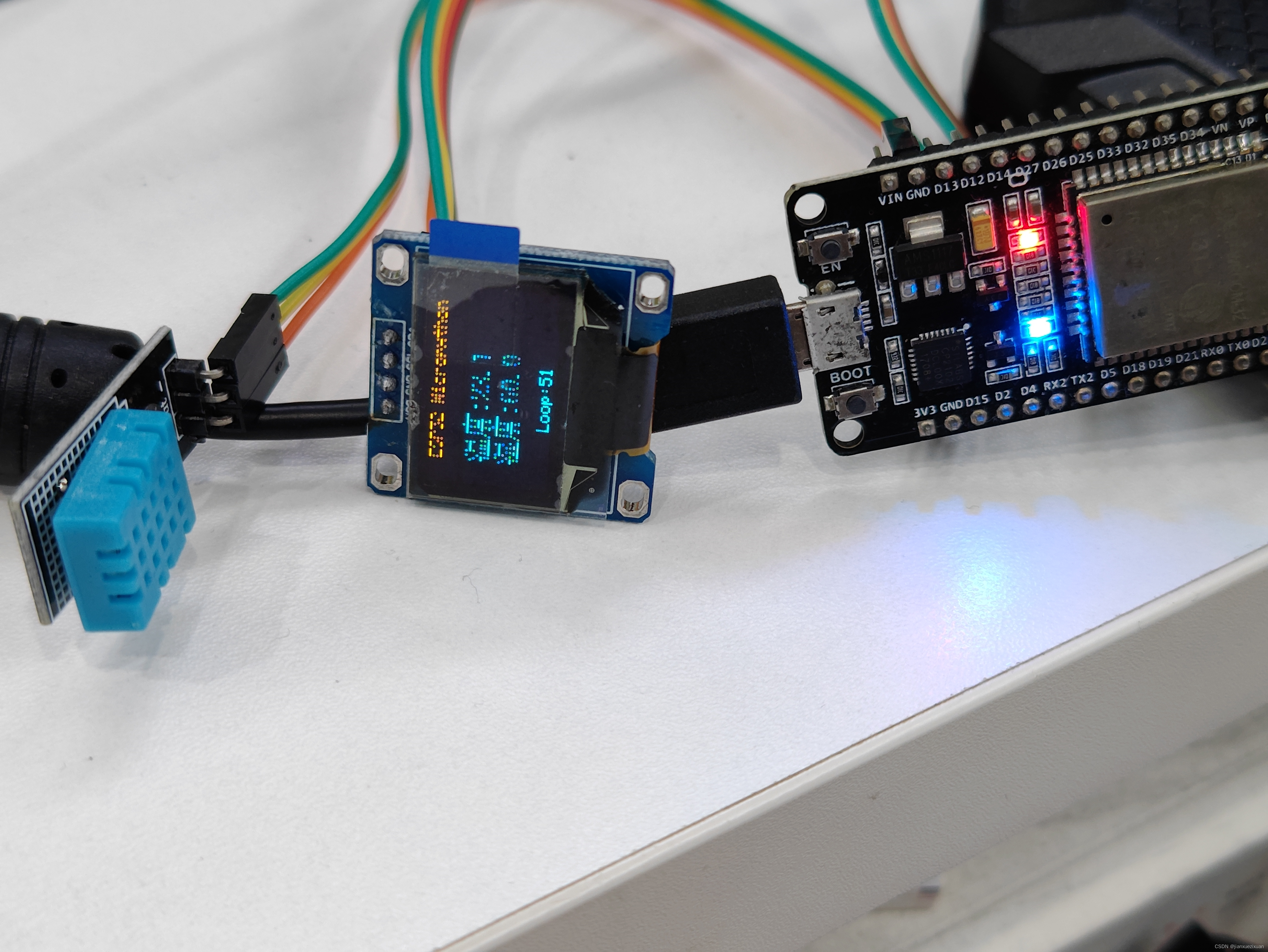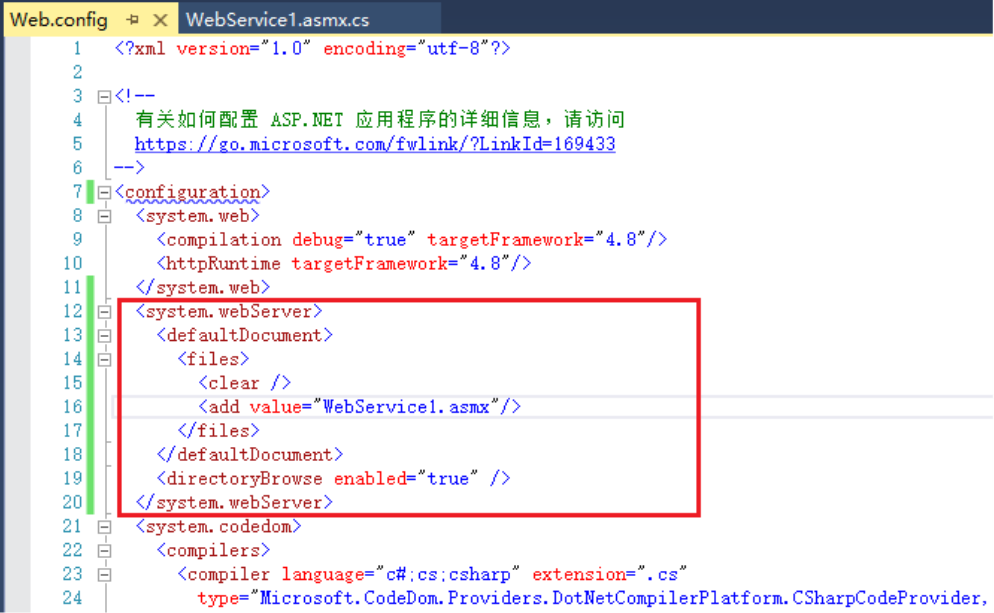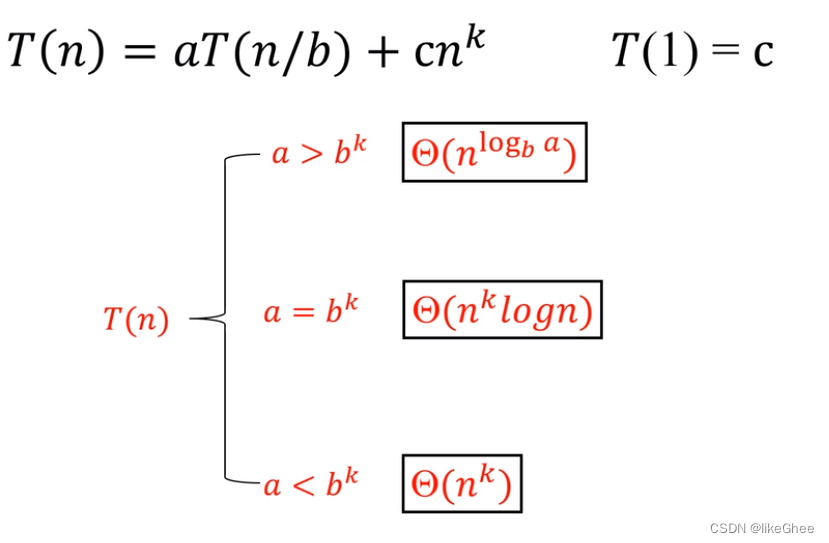什么是树
- 一种
分层数据的抽象模型。 - 前端工作中常见的树包括:DOM树,级联选择,树形控件
- JS中没有树,可以用Object和Array构建树
- 树的常用操作:
深度/广度优先遍历,先中后序遍历
深度优先遍历
- 访问
根节点 - 对根节点的
children挨个进行深度优先遍历
代码展示:
const tree = {
val: 'a',
children: [
{
val: 'b',
children: [
{
val: 'd',
children: []
},
{
val: 'e',
children: []
}
]
},
{
val: 'c',
children: [
{
val: 'f',
children: []
},
{
val: 'g',
children: []
}
]
}
],
};
const dfs = (root) => {
console.log(root.val);
root.children.forEach(dfs);
}
dfs(tree);
输出顺序:a -> b -> d -> e -> c -> f -> g
广度优先遍历
- 新建一个
队列,把根节点入队 - 把
队头出队并访问 - 把
队头的children分别入队 - 重复二,三步,直到队列为空
代码展示:
const bfs = (root) => {
const q = [root];
while (q.length) {
const n = q.shift();
console.log(n.val);
n.children.forEach((child) => {
q.push(child);
})
}
}
bfs(tree);
输出顺序:a -> b -> c -> d -> e -> f -> g
先序遍历
- 访问
根节点 - 对根节点的
左子树进行先序遍历 - 对根节点的
右子树进行先序遍历
代码展示:
const bt = {
val: 1,
left: {
val: 2,
left: {
val: 4,
left: null,
right: null
},
right: {
val: 5,
left: null,
right: null
}
},
right: {
val: 3,
left: {
val: 6,
left: null,
right: null
},
right: {
val: 7,
left: null,
right: null
}
}
};
// 递归
const preorder = (root) => {
if (!root) return;
console.log(root.val);
preorder(root.left);
preorder(root.right);
}
preorder(tree);
// 迭代
const preorder = (root) => {
if (root) return;
const stack = [root];
while (stack.length) {
const n = stack.pop();
console.log(top.val);
if (n.right) stack.push(n.right);
if (n.left) stack.push(n.left);
}
}
}
preorder(tree);
参考视频:传送门
输出顺序:1 -> 2 -> 4 -> 5 -> 3 -> 6 -> 7
中序遍历
- 对根节点的
左子树进行中序遍历 - 访问
根节点 - 对根节点的
右子树进行中序遍历
代码展示:
// 递归
const inorder = (root) => {
if (!root) return;
preorder(root.left);
console.log(root.val);
preorder(root.right);
}
inorder(tree);
// 迭代
const inorder = (root) => {
if (!root) return;
const stack = [];
let p = root;
while (stack.length || p) {
while (p) {
stack.push(p);
p = p.left;
}
const n = stack.pop();
console.log(n.val);
p = n.right;
}
}
inorder(tree);
输出顺序:4 -> 2 -> 5 -> 1 -> 6 -> 3 -> 7
后序遍历
- 对根节点的
左子树进行后序遍历 - 对根节点的
右子树进行后序遍历 - 访问
根节点
代码展示:
// 递归
const postorder = (root) => {
if (!root) return;
preorder(root.left);
preorder(root.right);
console.log(root.val);
}
postorder(tree);
// 迭代
const postorder = (root) => {
if (!root) return;
const stack = [root];
const outputStack = [];
while (stack.length) {
const n = stack.pop();
outputStack.push(n);
if (n.left) stack.push(n.left);
if (n.right) stack.push(n.right);
}
while (outputStack) {
const n = outputStack.pop();
console.log(n.val);
}
}
postorder(tree);
输出顺序:4 -> 5 -> 2 -> 6 -> 7 -> 3 -> 1
leetcode题目
难度:简单
- 二叉树的最大深度
思路:
- 求最大深度,优先考虑
深度优先遍历 - 在深度优先遍历过程中,
记录每个节点所在的层级,找到最大的层级即可
代码展示:
/**
* @param {TreeNode} root
* @return {number}
*/
var maxDepth = function(root) {
let maxDepth = 0;
const dfs = (n, l) => {
if (!n) return;
dfs(n.left, l + 1);
dfs(n.right, l + 1);
if (!n.left && !n.right) maxDepth = Math.max(maxDepth, l);
}
dfs(root, 1);
return maxDepth;
};
复杂度分析:
-
时间复杂度:O(n):n为二叉树节点个数。
-
空间复杂度:O(height):height为二叉树的最大深度。在平均情况下,二叉树的高度与节点个数为对数关系,即 O(logN)。而在最坏情况下,树形成链状,空间复杂度为 O(N)。
- 翻转二叉树
思路:
- 方法一使用
广度优先遍历,在遍历树的过程中,交换当前层级下的左右子树 - 方法二使用
递归解决,递归最重要的是定义子问题。
代码展示:
方法一:广度优先遍历
/**
* @param {TreeNode} root
* @return {TreeNode}
*/
var invertTree = function(root) {
if (!root) root;
const bfs = (root) => {
const q = [root];
while (q.length) {
const n = q.shift();
const temp = n.right;
n.right = n.left;
n.left = temp;
if (n.left) q.push(n.left);
if (n.right) q.push(n.right);
}
}
bfs(root);
return root;
}
方法二:递归
/**
* @param {TreeNode} root
* @return {TreeNode}
*/
var invertTree = function(root) {
if (!root) return null;
let newTree = new TreeNode(root.val);
newTree.left = invertTree(root.right);
newTree.right = invertTree(root.left);
return newTree;
};
复杂度分析:
-
时间复杂度:O(n):n为二叉树节点个数。
-
空间复杂度:O(height):height为二叉树的最大深度。在平均情况下,二叉树的高度与节点个数为对数关系,即 O(logN)。而在最坏情况下,树形成链状,空间复杂度为 O(N)。
- 对称二叉树
思路:
- 通过遍历比较两个相同根节点的左子树和右子树的值是否相等
- 如果每次都相等,直到两个节点都不存在,说明是对称的
- 如果两个节点不相等,则说明不对称
代码展示:
/** * @param {TreeNode} root * @return {boolean} */
var isSymmetric = function(root) {
if (!root) return false;
const checkSym = (p, q) => {
if (!p && !q) return true;
if (!p || !q) return false;
return p.val === q.val && checkSym(p.left, q.right) && checkSym(q.left, p.right);
}
return checkSym(root, root);
}
复杂度分析:
-
时间复杂度:O(n):n为二叉树节点数。
-
空间复杂度:O(n):n为二叉树节点数,最差情况为O(n)。
- 二叉树的直径

思路:
- 考虑
深度优先遍历 - 寻找两个最深的节点距离之和
代码展示:
/**
* @param {TreeNode} root
* @return {number}
*/
var diameterOfBinaryTree = function(root) {
if (!root) return 0;
let res = 1; // 默认为根节点的路径长度
const dfs = (root) => {
if (!root) return 0;
let L = dfs(root.left); // 左子树深度,上图为例,最长L为2
let R = dfs(root.right); // 右子树深度,上图为例,最长R为1
res = Math.max(res, L + R + 1); // 最大L+R+1,+1为根节点,总共深度为4,即节点树为4
return Math.max(L, R) + 1; // 包含根节点的深度,上图为例,最长L为2,最长R为1
}
dfs(root);
return res - 1; // 最终结果要得到直径为3
};
复杂度分析:
- 时间复杂度:O(n):n为二叉树节点数。
- 空间复杂度:O(height):height为二叉树的最大深度。在平均情况下,二叉树的高度与节点个数为对数关系,即 O(logN)。而在最坏情况下,树形成链状,空间复杂度为 O(N)。
剑指 Offer 27. 二叉树的镜像
思路:
- 逐层递归互换左右子树节点的位置
代码展示:
/**
* @param {TreeNode} root
* @return {TreeNode}
*/
var mirrorTree = function(root) {
if (!root) return root;
const temp = root.left;
root.left = root.right;
root.right = temp;
mirrorTree(root.left);
mirrorTree(root.right);
return root;
}
优化后:
/** * @param {TreeNode} root * @return {TreeNode} */
var mirrorTree = function(root) {
if (!root) return root;
[root.left, root.right] = [mirrorTree(root.right), mirrorTree(root.left)];
return root;
}
复杂度分析:
-
时间复杂度:O(n):n为二叉树节点数。
-
空间复杂度:O(n):n为二叉树节点树。
- 二叉树的最近公共祖先
剑指 Offer 68 - II. 二叉树的最近公共祖先
思路:
- 递归
代码展示:
/** * @param {TreeNode} root * @param {TreeNode} p * @param {TreeNode} q * @return {TreeNode} */
var lowestCommonAncestor = function(root, p, q) {
// 当传入递归的树等于 p 或者等于 q,说明找到了 p 或者 q,返回给递归调用的 l 或 r
if (!root || p === root || q === root) return root;
let l = lowestCommonAncestor(root.left, p, q); // 递归调用,寻找 p 和 q
let r = lowestCommonAncestor(root.right, p, q); // 递归调用,寻找 p 和 q
return l && r ? root : l || r;
// 如果 p 和 q 分别在 root.left 和 root.right 中找到,则根节点 root 成为最近的公共祖先返回。
// 假如 p 和 q 在 root.left 中找到,递归会把 p 和 q 的公共祖先返回给 l。
// 假如,p 和 q 在 root.right 中找到,递归会把 p 和 q 的公共祖先返回给 r。
// 根节点root,l 或 r 最终成为当前函数的返回值。
};
复杂度分析:
- 时间复杂度:O(n):n为二叉树节点数。
- 空间复杂度:O(n):n为二叉树节点数。递归调用的栈深度取决于二叉树的高度,二叉树最坏情况下为一条链,此时高度为 N,因此空间复杂度为 O(N)。
剑指 Offer 55 - I. 二叉树的深度
思路:
- 考虑
深度优先遍历
代码展示:
var maxDepth = function (root) {
if (!root) return 0;
let max = 0;
const dfs = (root, l) => {
if (root.left) dfs(root.left, l + 1);
if (root.right) dfs(root.right, l + 1);
if (!root.left && !root.right) max = Math.max(max, l);
}
dfs(root, 1);
return max;
}
复杂度分析:
-
时间复杂度:O(n):n为二叉树节点数,计算树的深度需要遍历所有节点。
-
空间复杂度:O(n):最差情况下,空间复杂度为O(n)。
- 二叉树的所有路径
思路:
- 本题考虑使用
深度优先遍历。 - 如果当前节点有
左子树或右子树,就递归调用函数,直到左右子树都不存在,此时就是我们要找的的路径。
代码展示:
/**
* @param {TreeNode} root
* @return {string[]}
*/
var binaryTreePaths = function(root) {
if (!root) return [];
const res = [];
const dfs = (root, path) => {
if (root) {
path += root.val;
if (!root.left && !root.right) {
res.push(path);
} else {
path += '->';
dfs(root.left, path);
dfs(root.right, path);
}
}
}
dfs(root, "");
return res;
};
复杂度分析:
- 时间复杂度:O(n^2):n为二叉树节点数。在深度优先搜索中每个节点会被访问一次且只会被访问一次,每一次会对 path 变量进行拷贝构造,时间代价为 O(N),故时间复杂度为 O(N^2)。
- 空间复杂度:O(n^2):n为二叉树节点数。
剑指 Offer 32 - I. 从上到下打印二叉树
剑指 Offer 32 - II. 从上到下打印二叉树 II
- 解题方法同二叉树的层序遍历
- 平衡二叉树
思路:
-
考虑
深度优先遍历 -
算出最大深度和最小深度的差值,即可判断是否为平衡二叉树 (本题和求二叉树直径做法类似)
代码展示:
/**
* @param {TreeNode} root
* @return {boolean}
*/
var isBalanced = function(root) {
if (!root) return true;
let diff = 0;
const dfs = (root) => {
if (!root) return 0;
let L = dfs(root.left);
let R = dfs(root.right);
diff = Math.max(diff, Math.abs(R - L));
return Math.max(L, R) + 1;
}
dfs(root);
return diff - 1 <= 0;
};
复杂度分析:
-
时间复杂度:O(n):n为二叉树节点数。
-
空间复杂度:O(n):n为二叉树节点数,最差情况为O(n)。
- 合并二叉树
思路:
- 递归对两个相同位置的节点相加
代码展示:
/**
* @param {TreeNode} root1
* @param {TreeNode} root2
* @return {TreeNode}
*/
var mergeTrees = function(root1, root2) {
if (!root1 || !root2) return root1 || root2;
let newRoot = new TreeNode(root1.val + root2.val);
newRoot.left = mergeTrees(root1.left, root2.left);
newRoot.right = mergeTrees(root1.right, root2.right);
return newRoot;
};
复杂度分析:
-
时间复杂度:O(n):n为二叉树节点数。
-
空间复杂度:O(n):n为二叉树节点数。
- 路径总和
思路:
- 考虑
深度优先遍历 - 记录从根节点到当前节点的和,与target比较。
代码展示:
/** * @param {TreeNode} root * @param {number} targetSum * @return {boolean} */
var hasPathSum = function(root, targetSum) {
if (!root) return false;
let res = false;
const dfs = (root, val) => {
if (root.left) dfs(root.left, val + root.left.val);
if (root.right) dfs(root.right, val + root.right.val);
if (!root.left && !root.right && val === targetSum) res = true;
}
dfs(root, root.val);
return res;
};
复杂度分析:
-
时间复杂度:O(n):n为二叉树节点数。
-
空间复杂度:O(n):n为二叉树节点数。
- 二叉树的最小深度
思路:
-
方法一考虑使用
广度优先遍历 -
方法二考虑使用
深度优先遍历
代码展示:
方法一:
/**
* @param {TreeNode} root
* @return {number}
*/
var minDepth = function(root) {
if (!root) return 0;
let minDep = Infinity;
const bfs = (root, l) => {
const q = [[root, l]];
while (q.length) {
const [n, l] = q.shift();
if (n.left) q.push([n.left, l + 1]);
if (n.right) q.push([n.right, l + 1]);
if (!n.left && !n.right) minDep = Math.min(minDep, l);
}
}
bfs(root, 1);
return minDep;
};
方法二:
/** * @param {TreeNode} root * @return {number} */
var minDepth = function(root) {
if (!root) return 0;
if (root.left && root.right) {
return 1 + Math.min(minDepth(root.left), minDepth(root.right));
} else if (root.left) {
return 1 + minDepth(root.left);
} else if (root.right) {
return 1 + minDepth(root.right);
} else {
return 1;
}
};
复杂度分析:
-
时间复杂度:O(n):n为二叉树节点数。
-
空间复杂度:O(n):n为二叉树节点数。
- N 叉树的前序遍历
思路:
- 类似于二叉树的前序遍历
代码展示:
// 递归
var preorder = function(root) {
if (!root) return [];
const res = [];
const preord = (n) => {
if (n) res.push(n.val);
n.children.forEach(preord);
}
preord(root);
return res;
};
// 迭代
var preorder = function(root) {
if (!root) return [];
const stack = [root];
const res = [];
while (stack.length) {
const n = stack.pop();
res.push(n.val);
n.children.reverse().forEach(child => {
stack.push(child);
});
}
return res;
}
复杂度分析:
- 时间复杂度:O(n):n为二叉树节点数。
- 空间复杂度:O(height):height为二叉树最大深度。
剑指 Offer 54. 二叉搜索树的第k大节点
思路:
- 根据树的特点,采用
中序遍历,按右子树 - 根节点 - 左子树的顺序遍历,就可以由大到小找到第k大节点
代码展示:
/**
* @param {TreeNode} root
* @param {number} k
* @return {number}
*/
var kthLargest = function(root, k) {
if (!root || k <= 0) return null;
const stack = [];
const res = null;
let p = root;
while (stack.length || p) {
while (p) {
stack.push(p);
p = p.right;
}
const top = stack.pop();
if (--k === 0) return top.val;
p = top.left;
}
return res;
};
复杂度分析:
- 时间复杂度:O(n):n为二叉树节点数。
- 空间复杂度:O(n):n为二叉树节点数。
难度:中等
- 二叉树的前序遍历
代码展示:
/**
* @param {TreeNode} root
* @return {number[]}
*/
var preorderTraversal = function(root) {
if (!root) return [];
const stack = [root];
const res = [];
while (stack.length) {
const n = stack.pop();
res.push(n.val);
if (n.right) stack.push(n.right);
if (n.left) stack.push(n.left);
}
return res;
};
复杂度分析:
-
时间复杂度:O(n):n为二叉树节点数。
-
空间复杂度:O(n)
- 二叉树的中序遍历
代码展示:
/**
* @param {TreeNode} root
* @return {number[]}
*/
var inorderTraversal = function(root) {
if (!root) return [];
const stack = [];
const res = [];
let p = root;
while (stack.length || p) {
while (p) {
stack.push(p);
p = p.left;
}
const n = stack.pop();
res.push(n.val);
p = n.right;
}
return res;
};
复杂度分析:
-
时间复杂度:O(n):n为二叉树节点数。
-
空间复杂度:O(n)
- 二叉树的后序遍历
代码展示:
/**
* @param {TreeNode} root
* @return {number[]}
*/
var postorderTraversal = function(root) {
if (!root) return [];
const stack = [root];
const outputStack = [];
const res = [];
while (stack.length) {
const n = stack.pop();
outputStack.push(n);
if (n.left) stack.push(n.left);
if (n.right) stack.push(n.right);
}
while (outputStack.length) {
const n = outputStack.pop();
res.push(n.val);
}
return res;
};
复杂度分析:
-
时间复杂度:O(n):n为二叉树节点数。
-
空间复杂度:O(n)
- 二叉树的层序遍历
代码展示:
方法一:深度优先遍历
/**
* @param {TreeNode} root
* @return {number[][]}
*/
var levelOrder = function(root) {
if (!root) return [];
const res = [];
const dfs = ([root, l]) => {
if (!res[l]) {
res[l] = [root.val];
} else {
res[l].push(root.val)
}
if (root.left) dfs([root.left, l + 1]);
if (root.right) dfs([root.right, l + 1]);
}
dfs([root, 0]);
return res;
};
方法二:广度优先遍历
/**
* @param {TreeNode} root
* @return {number[][]}
*/
var levelOrder = function(root) {
if (!root) return [];
let res = [];
const bfs = (root, l) => {
const q = [[root, l]];
while (q.length) {
const [n, l] = q.shift();
if (!res[l]) res[l] = [];
res[l].push(n.val);
if (n.left) q.push([n.left, l + 1]);
if (n.right) q.push([n.right, l + 1]);
}
};
bfs(root, 0);
return res;
};
复杂度分析:
-
时间复杂度:O(n):n为二叉树节点数。
-
空间复杂度:O(n)
-
从前序与中序遍历序列构造二叉树
-
从中序与后序遍历序列构造二叉树
剑指 Offer 07. 重建二叉树
思路:
- 递归
代码展示:
参考:多种解法,逐渐优化
/**
* @param {number[]} preorder
* @param {number[]} inorder
* @return {TreeNode}
*/
var buildTree = function(preorder, inorder) {
if (!preorder.length || !inorder.length) return null;
const map = new Map();
for (let i = 0; i < inorder.length; i++) {
map.set(inorder[i], i);
}
const builder = (p_start, p_end, i_start, i_end) => {
if (p_start > p_end) return null;
let rootVal = preorder[p_start]; // 找到根节点
let root = new TreeNode(rootVal); // 设置二叉树的根节点
let mid = map.get(rootVal); // 找到根节点在inorder中的位置
let leftNum = mid - i_start; // 左子树的个数
root.left = builder(p_start + 1, p_start + leftNum, i_start, mid - 1);
root.right = builder(p_start + leftNum + 1, p_end, mid + 1, i_end);
return root;
}
return builder(0, preorder.length - 1, 0, inorder.length - 1);
};
复杂度分析:
-
时间复杂度:O(n):n为二叉树节点数。
-
空间复杂度:O(n)
- 二叉树的锯齿形层序遍历
思路:
- 同二叉树层序遍历
代码展示:
/**
* @param {TreeNode} root
* @return {number[][]}
*/
var zigzagLevelOrder = function(root) {
if (!root) return [];
const res = [];
const bfs = ([root, index]) => {
if (!root) return;
if (!res[index]) {
res[index] = [root.val];
} else {
index % 2 === 0 ? res[index].push(root.val) : res[index].unshift(root.val);
}
if (root.left) bfs([root.left, index + 1]);
if (root.right) bfs([root.right, index + 1]);
}
bfs([root, 0]);
return res;
};
复杂度分析:
-
时间复杂度:O(n):n为二叉树节点数。
-
空间复杂度:O(n)
- 二叉树的右视图
思路:
-
方法一考虑
广度优先遍历,每层保留最后一个元素 -
方法二考虑使用类似
先序遍历,根 - 右 - 左的方式遍历,每层第一个出现的元素保留下来即可
代码展示:
方法一:广度优先遍历
/**
* @param {TreeNode} root
* @return {number[]}
*/
var rightSideView = function(root) {
if (!root) return [];
const res = [];
const bfs = (root, l) => {
const q = [[root, l]]
while (q.length) {
const [n, l] = q.shift();
res[l] = n.val;
if (n.left) q.push([n.left, l + 1]);
if (n.right) q.push([n.right, l + 1]);
}
}
bfs(root, 0);
return res;
};
方法二:
/**
* @param {TreeNode} root
* @return {number[]}
*/
var rightSideView = function(root) {
if (!root) return [];
const res = [];
const stack = [[root, 0]];
while (stack.length) {
const [n, l] = stack.pop();
if (res[l] == undefined) res.push(n.val);
if (n.left) stack.push([n.left, l + 1]);
if (n.right) stack.push([n.right, l + 1]);
}
return res;
};
复杂度分析:
- 时间复杂度:O(n):n为二叉树节点数。
- 空间复杂度:O(n)
剑指 Offer 26. 树的子结构
思路:
- 递归比较
代码展示:
/** * @param {TreeNode} A * @param {TreeNode} B * @return {boolean} */
var isSubStructure = function(A, B) {
if (!A || !B) return false;
const isSameSub = (p, q) => {
if (!q) return true;
if (!p) return false;
if (p.val !== q.val) return false;
return isSameSub(p.left, q.left) && isSameSub(p.right, q.right);
}
return isSameSub(A, B) || isSubStructure(A.left, B) || isSubStructure(A.right, B);
};
复杂度分析:
-
时间复杂度:O(mn):m,n分别为A和B的节点数。
-
空间复杂度:O(m)
- 验证二叉搜索树
代码展示:
/** * @param {TreeNode} root * @return {boolean} */
var isValidBST = function(root) {
const helper = (root, lower, upper) => {
if (root === null) {
return true;
}
if (root.val <= lower || root.val >= upper) {
return false;
}
return helper(root.left, lower, root.val) && helper(root.right, root.val, upper);
}
return helper(root, -Infinity, Infinity);
};
复杂度分析:
-
时间复杂度:O(n):n为二叉树节点数。
-
空间复杂度:O(n)
- 不同的二叉搜索树
思路:
- 卡塔兰数公式
代码展示:
var numTrees = function(n) {
let C = 1;
for (let i = 0; i < n; ++i) {
C = C * 2 * (2 * i + 1) / (i + 2);
}
return C;
};
复杂度分析:
-
时间复杂度:O(n):n为二叉树节点数。
-
空间复杂度:O(1)
- 完全二叉树的节点个数
代码展示:
/** * @param {TreeNode} root * @return {number} */
var countNodes = function(root) {
return root ? countNodes(root.left) + countNodes(root.right) + 1 : 0;
};
复杂度分析:
- 时间复杂度:O(n):n为二叉树节点数。
- 空间复杂度:O(1)
剑指 Offer 34. 二叉树中和为某一值的路径
代码展示:
/**
* @param {TreeNode} root
* @param {number} target
* @return {number[][]}
*/
var pathSum = function(root, target) {
if (!root) return [];
const res = [];
let temp = [];
const dfs = (root, v) => {
if (!root) return null;
temp.push(root.val);
if (root.left) dfs(root.left, root.left.val + v);
if (root.right) dfs(root.right, root.right.val + v);
if (!root.left && !root.right && v === target) {
res.push([...temp]);
}
temp.pop();
}
dfs(root, root.val);
return res;
};
复杂度分析:
- 时间复杂度:O(n):n为二叉树节点数。
- 空间复杂度:O(n)
难度:困难
- 二叉树中的最大路径和
代码展示:
参考解法
/**
* @param {TreeNode} root
* @return {number}
*/
var maxPathSum = function(root) {
let maxNum = Number.MIN_SAFE_INTEGER;
const dfs = (root) => {
if (!root) return 0;
const left = dfs(root.left);
const right = dfs(root.right);
const curMaxSum = left + root.val + right; // 当前子树内部最大路径和
maxNum = Math.max(maxNum, curMaxSum);
const outputMaxSum = root.val + Math.max(left, right); // 当前子树对上一层输出的最大路径和
return outputMaxSum > 0 ? outputMaxSum : 0; // 大于0有输出的必要,小于0就返回0
};
dfs(root);
return maxNum;
}
复杂度分析:
- 时间复杂度:O(n):n为二叉树节点数。
- 空间复杂度:O(n)
剑指 Offer 37. 序列化二叉树
总结
继续对树的深度/广度优先遍历,先中后序遍历,层序遍历等遍历和递归的方法,有更深入的理解和学习。

